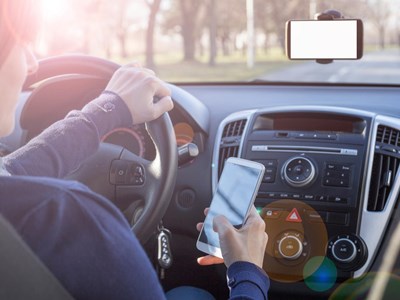How to Spot & Avoid Drunk Drivers

0.08% is the legal limit of blood alcohol concentration before driving under intoxication (DUI). However, alcohol begins to affect the brain at 0.02%, negatively impacting visual functions and judgment abilities.
A drunk driver may give away their mental state by engaging in dangerous driving maneuvers beyond simple mistakes. If you face this situation while on a road or highway, it’s vital to safely create distance between you and the drunk driver. Then, you should report the incident to law enforcement officials as soon as you can pull over.
In this post, a Little Rock personal injury lawyer describes the five most common signs of intoxicated driving, how to avoid drunk drivers, and what to do if you are injured by one.
The 5 Most Common Signs of Intoxicating Driving
The National Highway Traffic Safety Administration (NHTSA) trains law enforcement officials in the visual detection of DUI impairment. This training includes knowing the most common signs of drunk driving.
Sign 1: Lane Weaving
Lane weaving or swerving is the first indication that a driver is impaired by drugs or alcohol. You may notice them hugging the road’s shoulder, crossing over the center line, or crossing completely into oncoming traffic. Lane weaving has the potential to be extremely dangerous and cause severe injuries.
Sign 2: Erratic Speeds
Intoxicated drivers often compensate for their impairment by driving much slower or faster than the posted speed limit. They may also switch between speeds at varying intervals. Erratic speeds are a common sign that the driver may not be completely alert at the wheel.
Sign 3: Traffic Violations
An occasional traffic violation may not be cause for concern. However, running red lights, speeding, and tailgating could signify that a driver is intoxicated. The Municipal Code Library makes Little Rock’s traffic rules available to the public about what constitutes acceptable driving behavior within city limits.
Sign 4: Operating Errors
The road demands our full attention when we’re behind the wheel, and a drunk or drugged driver may not have the ability to meet its demands. If you notice someone making a lane change without checking their blind spot, driving with their high beams on unnecessarily, or making false starts at a red light, be on the lookout and maintain a safe distance from their vehicle.
Sign 5: Braking Problems
Drunk drivers are more likely to make jerky or abrupt stops. Their impaired vision may cause them to believe they see something in the road, or they could lack complete control over their foot’s acceleration and deceleration motions. Be sure to keep your eyes open for debris in the road in case the driver is genuinely trying to avoid an object.
For more information about spotting impaired drivers, click here to read “The Visual Detection of DWI Motorists,” a free pamphlet from the NHTSA.
How to Avoid Drunk Drivers on the Road
If you think you’ve identified a drunk driver, try to create a safe distance between you and them. Ensure that you engage in defensive driving tactics, exercise caution, and pull over in a safe location. If you’re on a cell phone, dial *277 to connect with the Arkansas State Police. Otherwise, dial 911 to report from a landline.
If possible, try to write down the vehicle’s license plate, color, make, and model. If you have a passenger in your car, they can photograph or video the drunk driver as you create distance between your vehicles. When calling law enforcement, inform the dispatcher that you witnessed a drunk driver and provide as much information about the vehicle and driver as possible, including the street they were on and the direction they were traveling when you last saw them.
What to Do if A Drunk Driver Injures You
If you are injured by a drunk driver, speak to an Arkansas personal injury attorney as soon as possible after contacting the authorities and getting medical attention. An experienced lawyer can help you navigate the claims process and demand a fair settlement from all relevant parties.
Your attorney will consider the relevant facts of the case, including the events leading up to the accident, the accident itself, and the injuries you suffered. This information will be used to paint a vivid picture of what happened for the insurance companies and to hold liable parties accountable. Finally, your legal representation will work with experts, obtain evidence, and cite relevant laws to support your claim for a settlement.
Schedule a Consultation with Beacon Legal Group in Little Rock
The personal injury lawyers at Beacon Legal Group want to help injured parties get the justice they deserve. We will fight compassionately for a settlement or civil award on your behalf to pay for things like medical bills, future lost earnings, lost enjoyment of life, and more.
Schedule an initial consultation with Beacon Legal Group now by calling (501) 907-9539, texting (865) 412-4125, or messaging us online. If you decide to hire us for legal representation, we don’t get paid unless you win.